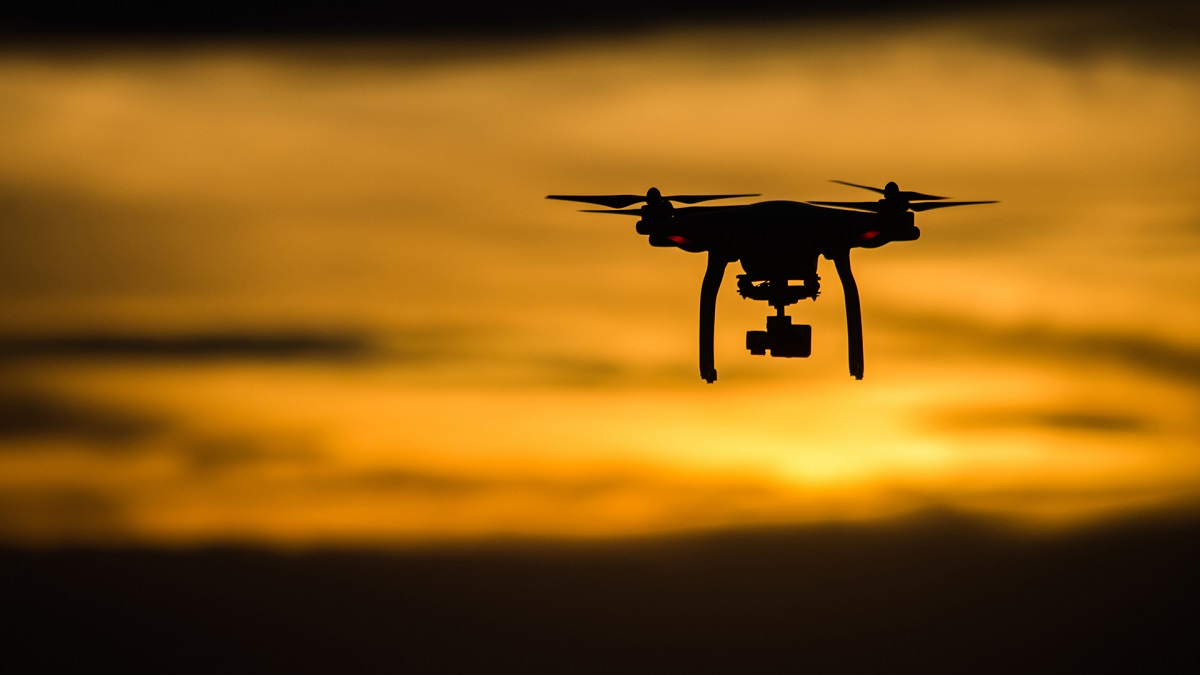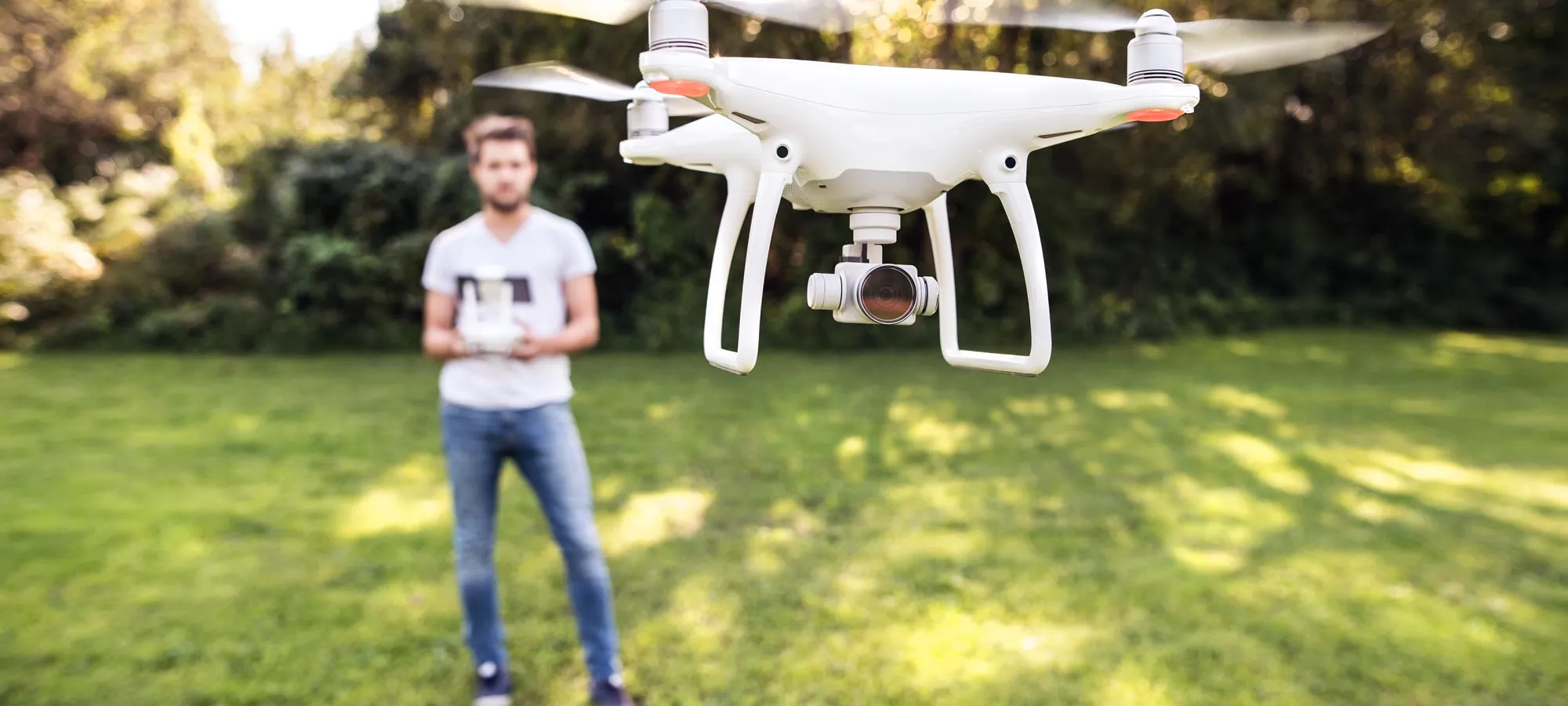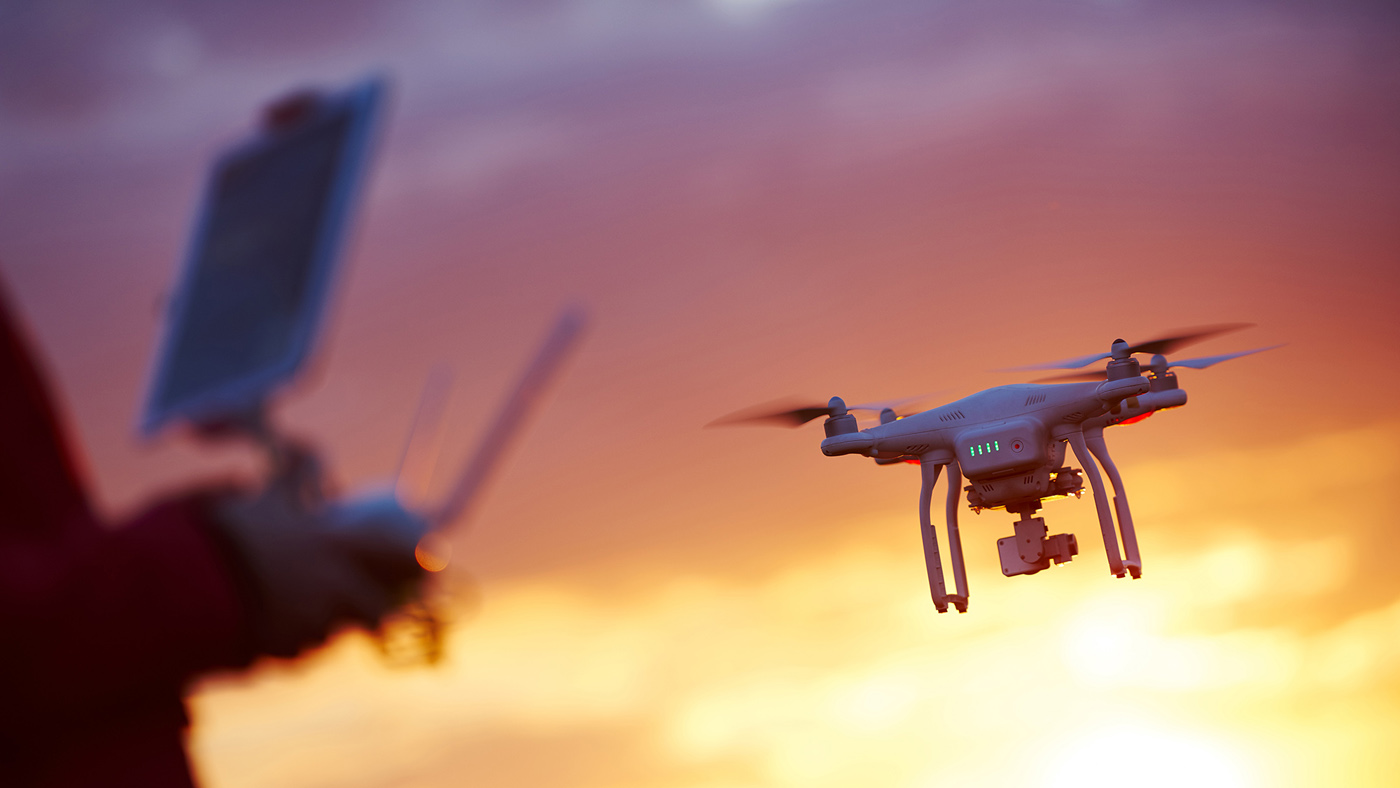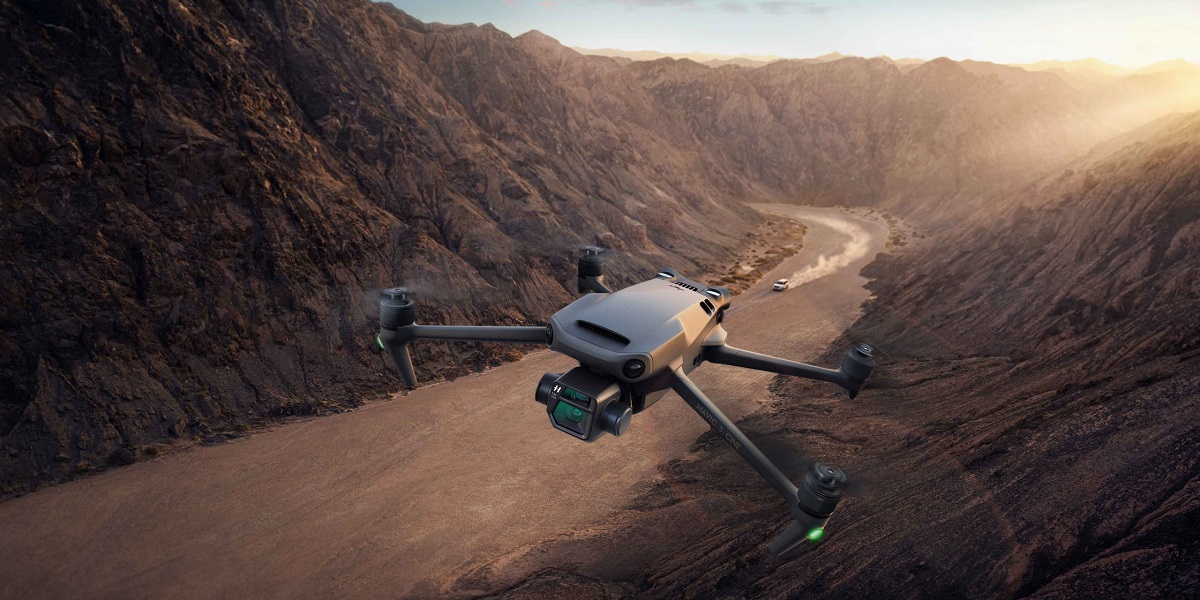Introduction
Unmanned aerial vehicles (UAVs), more commonly known as drones, have gained popularity in recent years for their aerial photography capabilities and recreational use. However, the increasing presence of drones has raised concerns about privacy and surveillance, particularly at night when it becomes difficult to spot them. Whether you’re worried about potential surveillance or simply curious about the possibility of a drone observing you during the nighttime, it’s essential to know how to detect their presence.
Understanding the basics of drones is a key starting point. Drones come in various sizes and shapes, ranging from small toy-like devices to larger professional-grade models equipped with advanced cameras and sensors. They can fly at different altitudes and speeds, and their capabilities continue to evolve rapidly.
In this guide, we will explore various methods to help you determine whether a drone is watching you at night. Please note that while these methods can provide some insights, they are not foolproof, and it’s important to respect privacy and follow local regulations regarding drone use.
By familiarizing yourself with the signs of drone activity and utilizing different detection techniques, you can gain a better understanding of your surroundings and potentially identify if there is a drone present. Let’s dive into the details and uncover the ways to detect drone surveillance at night.
Understanding the Basics of Drones
Before diving into the methods of detecting drones at night, it’s important to have a solid grasp of the fundamental characteristics of these unmanned aerial vehicles. Drones, also known as unmanned aerial systems (UAS), are aircraft that are operated remotely by a human operator or autonomously through pre-programmed flight plans.
Drones come in various shapes and sizes, ranging from small quadcopters to fixed-wing aircraft. They are equipped with motors, propellers, and often a camera or other sensors, which allow them to capture images or videos from the air. Most drones are controlled using a handheld remote, a mobile application, or a combination of both.
These flying machines are capable of flying at different altitudes and speeds. Some consumer drones have limited range and flight time, while others are designed for longer flights, extended battery life, and more advanced features. Professional-grade drones used by photographers and videographers often have higher flight capabilities, enabling them to cover greater distances and reach higher altitudes.
It’s essential to note that drone technology continues to evolve rapidly. New models are being released regularly with improved flight performance, longer flight times, enhanced camera capabilities, and advanced flight features such as obstacle avoidance and follow-me modes.
To operate a drone legally, it is important to adhere to local regulations and guidelines. Many countries require drone operators to register their devices, obtain permits for commercial use, and follow specific rules regarding flight restrictions and privacy concerns. Familiarize yourself with the regulations in your area to ensure responsible and legal use of drones.
Now that we have a basic understanding of drones, let’s delve into the methods that can help us identify if a drone is surveilling us at night.
Signs of Drone Activity
When trying to determine if a drone is watching you at night, there are several signs and indicators you can look for. While these indicators do not guarantee the presence of a drone, they can help you become more aware of your surroundings and potentially identify any suspicious aerial activity. Here are some key signs to keep an eye out for:
- Unusual buzzing or humming sounds: Drones typically produce a distinct buzzing or humming sound due to the rotation of their propellers. If you hear an unfamiliar sound that resembles a small aircraft but cannot locate its source, it might be an indication of a nearby drone.
- Visible flashing lights: Many drones are equipped with LED lights that help with orientation and provide visual cues to the operator. Look for sporadic or irregular blinking lights in the sky, especially those that do not follow the typical patterns of aircraft lights.
- Unusual flight patterns: Observe the movement of lights in the sky. Drones often exhibit unusual flight patterns such as hovering, sudden changes in direction, or quick ascents and descents. These erratic movements are not characteristic of traditional aircraft and can be a strong indication of drone activity.
- Mysterious objects in the sky: If you spot a small aircraft-like object that seems to be flying at a relatively low altitude without any visible wings or rotors, there is a chance that it could be a drone. Keep a keen eye on the object’s behavior and trajectory to gather more evidence.
- Presence of cameras or sensors: Advanced drones often come equipped with built-in cameras or other sensors, such as infrared or thermal imaging devices. If you suspect a drone’s presence, look for any unusual attachments or protrusions that could indicate the presence of cameras or additional equipment.
Remember, these signs are not foolproof evidence of drone activity, but they can raise your suspicions and prompt further investigation. In the next sections, we will explore additional methods to help confirm the presence of a drone watching you at night.
Listening for Drone Sounds
One of the most effective ways to detect a drone’s presence at night is by listening for distinct sounds associated with their operation. Drones typically emit buzzing or humming sounds due to the rotation of their propellers. By paying close attention to the surrounding audio environment, you may be able to identify these unique sounds and determine if a drone is nearby.
To effectively listen for drone sounds, follow these steps:
- Find a quiet location: Move to an area where there is minimal background noise, such as traffic or other loud disturbances. This will help you better isolate and identify sounds coming from a drone.
- Stay alert and patient: Drones may not constantly emit sounds, especially during periods of hovering or stationary flight. Be patient and stay alert, as these intervals of silence can be followed by sudden bursts of sound.
- Familiarize yourself with common sounds: Spend time listening to online recordings or videos of drone sounds to familiarize yourself with common drone noises. This will help you differentiate drone sounds from other ambient noises.
- Be aware of the proximity: Keep in mind that the sound emitted by a drone may vary depending on its distance from your location. As a general rule, the closer the drone is to you, the louder and more distinct the sound will be.
- Use headphones or earplugs: Blocking out surrounding noise with headphones or earplugs can enhance your ability to detect subtle drone sounds. Ensure that the volume is at a comfortable level to prevent any potential damage to your hearing.
Though listening for drone sounds can be helpful, it’s important to note that some drones, especially those designed for stealth operations or that utilize quieter brushless motors, may emit significantly less noise, making them more difficult to detect by sound alone.
While sound detection can provide valuable insights, it should be used in conjunction with other methods to strengthen your ability to detect and confirm drone activity at night.
Flashlight Test
The flashlight test is a simple yet effective method to determine if a drone is watching you at night. By using a flashlight, you can observe how the light reflects off the drone’s body or camera lens, helping you identify its location in the dark sky.
To perform the flashlight test, follow these steps:
- Choose a powerful flashlight: Select a flashlight with a high lumen output to ensure maximum visibility and beam reach. This will help you locate and illuminate the drone in the night sky.
- Go to a dark outdoor area: Move to an open area away from artificial lights, such as streetlights or buildings, to minimize potential interference. The darker the surroundings, the easier it will be to spot the reflected light from the drone.
- Point the flashlight towards the suspected drone: Aim the beam of the flashlight towards where you believe the drone is located. Sweep the flashlight beam across the sky in different directions, paying close attention to any moments when you notice the light reflecting off an object.
- Observe for reflections: Look for reflections of the flashlight beam bouncing off metallic or reflective surfaces of the drone, such as its body or camera lens. These reflections will appear as brief glimmers or flashes of light, indicating the presence of the drone.
- Repeat the test: If you don’t initially see any reflections, try repeating the test from different angles. Drones can have different surface properties and configurations, so you may need to adjust your position and flashlight direction for optimal reflection detection.
It’s important to note that the flashlight test may be more effective on drones with reflective components or when the drone is flying at a relatively close distance. Additionally, performing the test during overcast or cloudy nights may reduce the chances of potential reflection detection.
The flashlight test, when combined with other detection methods, can provide additional confirmation and help you gather evidence of a drone’s presence at night.
Monitoring Drone Lights
Monitoring the lights on a drone can be a useful way to determine its presence and track its movements at night. Many drones are equipped with LED lights that serve various purposes, such as aiding in orientation, indicating flight status, or providing visual cues to the operator. By observing and analyzing the patterns and behavior of these lights, you can gain valuable insights into the drone’s activities.
Here are some key points to consider when monitoring drone lights:
- Familiarize yourself with typical drone light configurations: Different drones may have varying light setups, but some common elements include front-facing white lights, rear-facing red lights, and green lights on the underside. Research the light configurations of popular drone models to better understand what to look for.
- Pay attention to light patterns: Take note of any unusual blinking, flashing, or alternating light patterns. Most drones have standardized light patterns to indicate their flight status. If you observe lights that deviate from these patterns or exhibit erratic behavior, it could be an indication of suspicious drone activity.
- Track the movement of lights: Observe how the lights move in the sky. If you notice lights that hover in one position or make sudden, unexpected changes in altitude or direction, it suggests the presence of a drone rather than conventional aircraft. Tracking the light’s movement can provide valuable clues about the drone’s location and behavior.
- Record and compare observations: Keep a log or record of your observations, including specific details about the light patterns, duration of sightings, and any other relevant information. By comparing these records over time, you may be able to identify patterns and establish a more accurate understanding of drone activity in your area.
It’s important to note that analyzing drone lights alone may not always be sufficient to confirm drone surveillance. Other factors, such as the time and location of sightings, combined with additional detection methods, can provide a more comprehensive assessment.
By monitoring the lights on drones and staying vigilant, you can gather important data to support your investigation and determination of whether a drone is watching you at night.
Look for Infrared Cameras
When trying to detect if a drone is watching you at night, one method is to look for the presence of infrared (IR) cameras. Infrared cameras, also known as thermal imaging cameras, detect and capture the heat signatures emitted by objects, including drones.
Here are some key points to consider when looking for infrared cameras:
- Know how infrared cameras work: Infrared cameras operate by detecting and converting the heat emitted by objects into a visible image. Unlike traditional cameras that rely on visible light, infrared cameras can detect thermal energy, allowing them to capture images in low-light or dark conditions.
- Understand the potential use of infrared cameras on drones: Some drones, especially those used for surveillance or professional purposes, may be equipped with infrared cameras. These cameras enable the drone operator to capture images or footage in situations where visibility is limited, such as at night or in low-light environments.
- Look for additional equipment or attachments: Infrared cameras on drones may appear as additional equipment or attachments compared to standard drone models. Look for protrusions, lenses, or other modifications that could indicate the presence of an infrared camera.
- Observe the behavior of the drone: Drones equipped with infrared cameras may exhibit specific flight patterns or behaviors. They might hover or circle around a particular area, indicating their focus on capturing thermal imagery. Take note of any unusual or suspicious drone activities.
- Consider hiring professionals: If you suspect the presence of a drone with an infrared camera, it may be advisable to consult with professionals experienced in drone detection and countermeasures. They can provide advanced equipment and expertise to help confirm the presence of a drone and take appropriate action if necessary.
It’s important to keep in mind that not all drones will have infrared cameras, and the presence of an infrared camera does not necessarily indicate malicious intent. There are legitimate uses for drones equipped with this technology, such as search and rescue operations or wildlife monitoring.
By being aware of the potential presence of infrared cameras on drones and observing their behavior, you can gather valuable information to assess if a drone is watching you at night.
Using a Thermal Imaging Camera
When trying to detect a drone watching you at night, using a thermal imaging camera can be an effective method. Thermal imaging cameras, also known as thermographic cameras, detect heat signatures emitted by objects and can help identify the presence of a drone even in low-light or dark conditions.
Here are some important considerations when using a thermal imaging camera:
- Understanding how thermal imaging cameras work: Thermal imaging cameras capture the infrared radiation emitted by objects. They detect and convert this radiation into visible images, with warmer objects appearing brighter and cooler objects appearing darker. By using a thermal imaging camera, you can identify the heat signature of a drone.
- Selecting the right thermal imaging camera: There are various types of thermal imaging cameras available, ranging from handheld devices to mounted cameras. Choose a camera that suits your needs and budget, ensuring it has the necessary sensitivity and resolution to detect small heat signatures at a distance.
- Scanning the area systematically: When using a thermal imaging camera, scan the area methodically, focusing on the sky and potential flight paths of drones. Pay attention to any unusual heat sources that could be indicative of a drone’s presence.
- Be aware of false positives: Keep in mind that thermal imaging cameras can detect various heat sources, such as animals, trees, buildings, or even residual heat from the surrounding environment. Familiarize yourself with the typical thermal signatures of different objects to avoid mistaking them for a drone.
- Consulting with professionals: If you are unsure about operating a thermal imaging camera or want to ensure accurate interpretation of the images, consider consulting with professionals experienced in thermal imaging and drone detection. They can provide guidance and analysis to help identify drone heat signatures accurately.
By using a thermal imaging camera, you can detect the heat signature emitted by a drone, distinguishing it from other objects in the night sky. This method can enhance your ability to confirm if a drone is watching you at night.
Detecting Drone Radio Signals
Another method to detect if a drone is watching you at night is by detecting the radio signals it emits. Drones use radio frequencies to communicate with their controllers or to transmit data and video feeds. By utilizing specialized equipment, you can detect and analyze these radio signals to identify the presence of a drone in your vicinity.
Here are some considerations when detecting drone radio signals:
- Understanding drone radio frequencies: Drones typically operate on specific radio frequencies allocated for remote control and communication purposes. These frequencies can vary depending on the drone model and the region in which it is being used. Research the common radio frequencies used by drones in your area to customize your detection efforts.
- Using a spectrum analyzer: Spectrum analyzers are specialized equipment that can scan and analyze radio frequency signals. By using a spectrum analyzer, you can detect and identify the radio signals emitted by drones in your vicinity. Look for unusual or unfamiliar signals that could indicate the presence of a drone.
- Seeking professional assistance: If you are unfamiliar with spectrum analyzers or require more advanced detection capabilities, consider reaching out to professionals who specialize in drone detection and radio frequency analysis. They can provide expertise and advanced equipment to help detect and identify drone radio signals accurately.
- Understanding limitations: It’s important to note that drone radio signal detection has its limitations. Factors such as distance, obstacles, and terrain can impact the range and accuracy of signal detection. Additionally, some drones may utilize encryption or frequency-hopping techniques to make their signals more difficult to detect and analyze.
- By considering multiple detection methods: Combining drone radio signal detection with other techniques, such as visual observation or thermal imaging, can provide a more comprehensive approach to identifying drone activity. Different detection methods complement each other and increase the chances of accurate detection.
By detecting the radio signals emitted by drones, you can gain valuable insights and evidence of their presence. This method, when used in conjunction with other detection techniques, can help ascertain if a drone is watching you at night.
Analyzing Flight Patterns
Examining and analyzing the flight patterns of drones can provide valuable clues to determine if a drone is watching you at night. Drones have distinct flight characteristics and behaviors that differ from traditional aircraft. By observing and analyzing their flight patterns, you can gain insights into their activities and potentially identify any suspicious or surveillant behavior.
Consider the following points when analyzing drone flight patterns:
- Observe repetitive or prolonged hovering: Drones used for surveillance purposes may hover in a stationary position for extended periods. If you notice a drone hovering in the same area or circling a specific location, it could indicate monitoring or surveillance activity.
- Watch for sudden changes in direction: Drones often exhibit quick and abrupt changes in flight direction, unlike traditional aircraft that follow more predictable flight paths. If you observe a drone making sudden and erratic maneuvers, such as sharp turns or abrupt ascents and descents, it could be indicative of suspicious behavior.
- Monitor flight altitude and speed: Drones can fly at varying altitudes and speeds. While recreational drones typically fly at lower altitudes, drones used for surveillance or professional purposes may operate at higher altitudes to maintain a wider field of view. If you notice a drone flying at an unusually high altitude or at a fast speed, it might warrant further investigation.
- Track repetitive flight patterns: Some drones may follow specific flight paths or patterns in their surveillance activities. If you notice a drone consistently flying along the same path or covering certain areas repeatedly, it could indicate intentional monitoring or data collection.
- Document and compare observations: Take detailed notes or record the drone’s flight patterns to establish a pattern over time. By comparing and analyzing this data, you may identify any emerging trends or patterns that can help in determining if the drone’s activities are consistent with surveillance.
Understanding and analyzing drone flight patterns can provide critical insights into their intentions and activities at night. It’s important to combine this method with other detection techniques to increase the accuracy of your assessment of drone presence and potential surveillance.
Conclusion
Detecting and determining if a drone is watching you at night is a challenging task that requires a combination of observation, analysis, and the use of specialized tools. By utilizing various methods, including listening for drone sounds, performing the flashlight test, monitoring drone lights, looking for infrared cameras, using a thermal imaging camera, detecting radio signals, and analyzing flight patterns, you can increase your chances of identifying the presence of a drone.
It is important to remember that none of these methods are foolproof, and not all drones exhibit the same characteristics or patterns. Additionally, some drones may employ advanced technologies and techniques to avoid detection. Therefore, it is crucial to supplement these detection methods with research on local regulations and consult professionals for guidance when necessary.
Ultimately, the goal of detecting a drone watching you at night is to ensure your safety and privacy. By staying informed about drone technology, being vigilant about your surroundings, and understanding the signs and indicators of drone activity, you can better protect yourself and maintain your privacy in our increasingly drone-filled world.

























